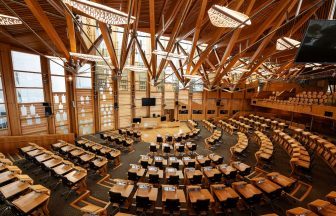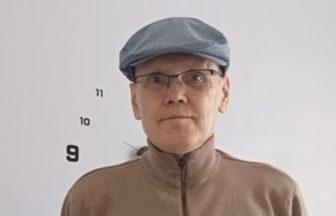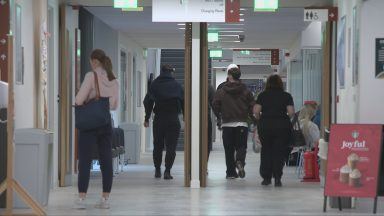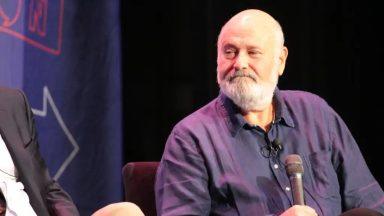Martin Lewis said he was disappointed by the proposed changes, which, in his mind, do not go far enough.
From January, energy suppliers will be required to offer at least one tariff with lower standing charges, under plans being developed by the industry regulator.
Ofgem said on Wednesday it wants to give consumers more choice on how they pay standing charges, with the plans set to allow households to pay the costs as part of their unit rate by lowering the daily fixed amount.
But the body was criticised for ditching proposals to remove the fixed costs entirely for some deal, with consumer champion Martin Lewis saying January’s changes did not go far enough and did nothing to help vulnerable low-users of energy.
Wednesday’s announcement came ahead of an energy price hike, with a bill for a typical household set to rise from £1,720 to £1,755 a year, a 2% rise, from October 1 when the latest energy price cap comes into effect.
What does this mean for your energy bills, and would you be better off on a low standing charge deal?

What are standing charges?
Standing charges are fees applied daily, regardless of how much energy the customer uses. They are used to cover the cost of supplying energy to homes and businesses.
Everyone with an energy supply pays these, but they vary depending on supplier, region, tariff, location and type of meter.
Energy providers say these charges help maintain the supply network and also cover the costs of building new network infrastructure. They also argue that the charges keep the power on when energy suppliers go bust.
The average yearly standing charge for a household’s energy comes to around £300.
Why are they so controversial?
Campaigners say they are unfair because everybody pays the same rate, meaning they make up a far higher proportion of bills for people using less energy.
Concerns had also been raised that the flat rate does little to encourage energy saving, that those with high usage are being charged the same as those who use less.
Martin Lewis, founder of Money Saving Expert, said he receives more complaints about standing charges than any other energy bill-related topic.
“They are a moral hazard,” Lewis said.
“They penalise older people who only turn their gas on in the winter,” he added.
“[Pubs] have fixed costs too, they put them all in the pint of beer. There is absolutely no need for all the fixed costs to be in the standing charge.”

What would the new plans involve?
Under the new plans, energy regulators will be forced to offer consumers at least one tariff with lower standing charges from January.
Ofgem stressed, however, these charges cannot be removed entirely and that they can only be moved from one part of the bill to another, which means they are unlikely to lead to lower energy costs.
Ofgem said it dropped earlier plans for tariffs with zero standing charges and much higher unit rates, as this could have unfairly impacted consumers with high energy needs, such as those who rely on power for medical reasons.
It is also looking to introduce a minimum usage on the new tariffs so that those with second homes or properties left vacant for long periods do not disproportionately benefit.
Would you benefit from a tariff with a lower standing use?
The new lower standing charge tariff would only benefit people with low energy usage, as the costs taken off this daily charge will likely be added to the price they pay per unit of energy consumed.
Lewis estimated that if you pay under or around £1,200 a year for energy, you may benefit from this kind of contract.
But to make those savings, you would have to choose to switch to the tariff yourself, and would not, as Martin Lewis had been campaigning for, be automatically moved to the tariff if energy companies felt you would benefit.
Campaigners have raised concerns that those most likely to benefit from this new type of tariff are also those in society least likely to engage with switching energy companies and therefore will miss out on any potential savings.
Ofgem is now launching a final consultation on the plans, intending to decide by the end of the year, paving the way for the new tariffs to be available to everyone across Britain by the end of January.
What has been said about the proposals?
Tim Jarvis, director general of markets at Ofgem, said he had listened to “thousands of consumers'” concerns over standing charges.
“We have carefully considered how we can offer more choice on how they pay these fixed costs, however we have taken care to ensure we don’t make some customers worse off.
“After examining all the options available to us, we believe that the right way forward is to require all major suppliers to offer at least one tariff with a lower standing charge.
“This will deliver the choice we know customers want, without having a detrimental impact on customers that have high energy needs.”
But he added: “We cannot remove these charges; we can only move costs around.”
Ofgem said the new lower standing charge tariff mandate would likely only be a short-term measure, while it moots permanent changes to allocate costs within the system, as the UK shifts towards renewable energy.
Martin Lewis said he was “disappointed” in the planned changes.
“There was a chance to see a proper mandated low-standing charge option to benefit many, and while I hope I’m wrong, it looks like Ofgem may be about to somewhat smother it with the pillow of bureaucracy,” he wrote on X.
He said the proposed changes do not appear to fall under the price-cap mechanism and so could see companies charging unlimited amounts on units of energy.
Lewis also raised concerns that those who would benefit the most from these tariffs – vulnerable consumers with low energy usage – tend not to switch tariffs.
“While the price cap has unfortunately become a default price for many, the reason it was set up was as a backstop tariff for those who don’t or can’t engage in the market. Mandating a low standing charge tariff outside the cap won’t help them.”
The consumer expert was also concerned Ofgem’s plans for a minimum usage on these tariffs would hit many “very low users,” saying “I worry Ofgem has picked an easy route to appease suppliers’ concerns, that doesn’t help the most vulnerable.”
Follow STV News on WhatsApp
Scan the QR code on your mobile device for all the latest news from around the country






























